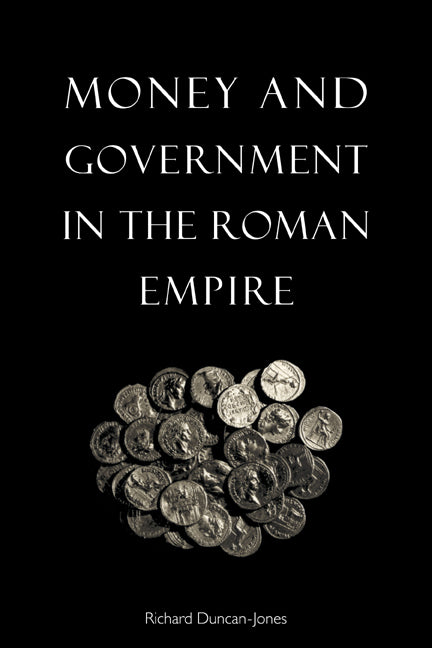Freshly Printed - allow 8 days lead
Couldn't load pickup availability
Money and Government in the Roman Empire
A discussion of minting and financial policy in the first three centuries of the Roman Empire.
Richard Duncan-Jones (Author)
9780521648295, Cambridge University Press
Paperback, published 13 July 1998
324 pages, 11 b/w illus. 108 tables
22.8 x 15.2 x 1.9 cm, 0.445 kg
'This book will be an essential reference work for Roman historians and numismatics and will also be of interest to economic historians.' Coins and Antiques
Rome's conquests gave her access to the accumulated metal resources of most of the known world. An abundant gold and silver coinage circulated within her empire as a result. But coinage changes later suggest difficulty in maintaining metal supplies. By studying Roman coin-survivals in a wider context, Dr Duncan-Jones uncovers important facts about the origin of coin hoards of the Principate. He constructs a new profile of minting, financial policy and monetary circulation, by analysing extensive coin evidence collected for the first time. His findings considerably advance our knowledge of crucial areas of the Roman economy.
List of plates
List of figures
List of tables
Preface
Abbreviations
Part I. The Economics of Empire: 1. Surplus and deficit
2. Money, prices and inflation
3. The imperial budget
4. Tax and tax-cycles
Part II. The Coin-Evidence: 5. Coin-hoards and their origin
6. The implications of coin-hoards
Part III. Money and Money-Supply: 7. Coinage and currency: an overview
8. The chronology of mint-output
9. Reign-studies: the chronology and structure of coin-output
10. The size of die-populations
11. The size of coin-populations
12. Mobility and immobility of coin
13. Weight-loss and circulation-speed
14. Wastage and reminting of coin
15. Change and deterioration
16. Contrast and variation in the coinage
Appendices: 1. Payments of congiaria
2. The chronology of minting under Tiberius
3. Variations in land-tax in Egypt
4. Assessments of tax-revenue in the sources
5. Tax comparisons with Mughal India
6. Hoards below the sampling threshold
7. Rates of donative
8. Programs for finding negative binomial k and for estimating die-populations
9. Die-productivity in medieval evidence
10. Aureus and denarius hoards used in the main anlaysis
Bibliography
Index.
Subject Areas: Monetary economics [KCBM], General & world history [HBG]


